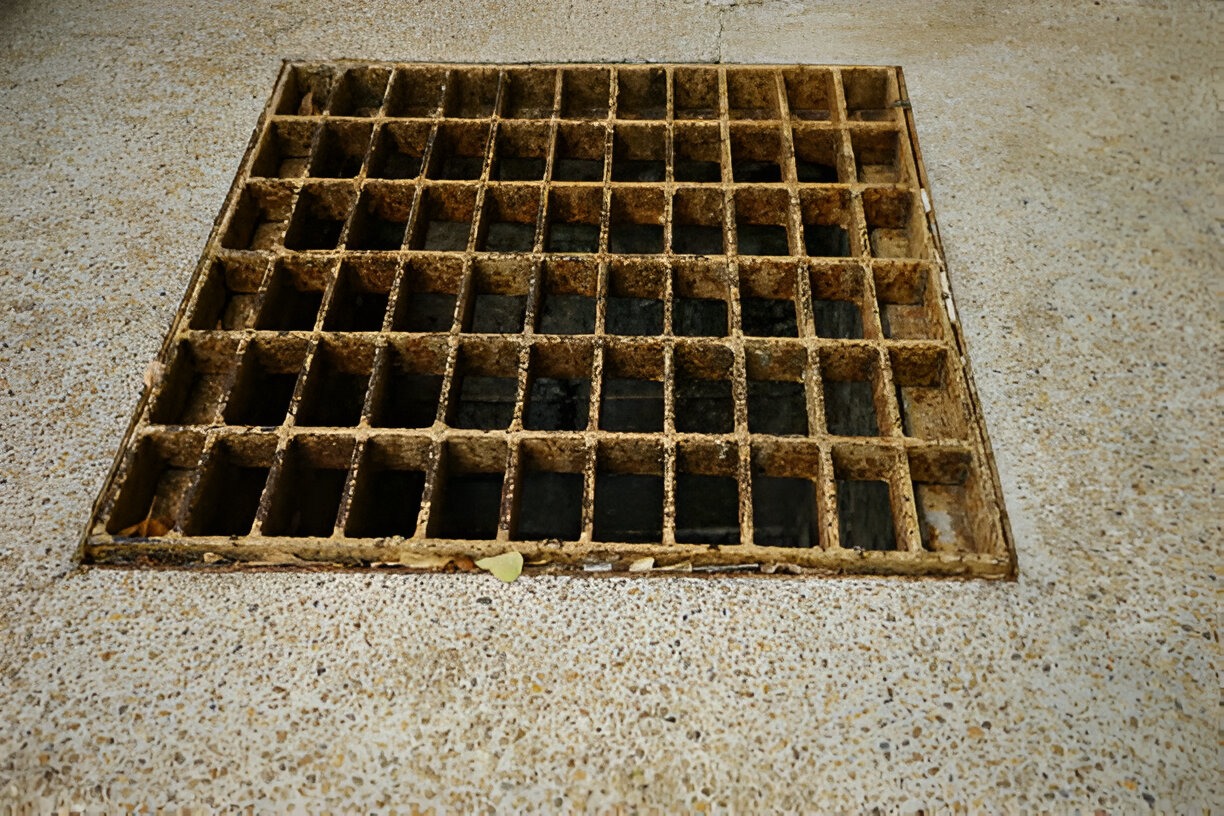Basements are prone to water accumulation, whether from leaks, spills, or natural seepage. A floor drain in the basement is essential as it helps remove this excess water, preventing flooding and potential water damage. However, like any other plumbing fixture, a basement floor drain requires regular maintenance to ensure it remains functional. If left unchecked, it can become clogged, leading to unpleasant odors, water pooling, and even mold growth. In this article, we’ll walk you through the steps to clean a basement floor drain effectively, ensuring your basement stays fresh and dry.
Why Do Basement Floor Drains Get Clogged?
Before diving into the cleaning process, it’s important to understand why basement floor drains get clogged. Over time, debris such as dirt, hair, and other particles can accumulate in the drain, leading to a blockage. Additionally, if the water in the drain trap evaporates, it can allow sewer gases to escape, creating a foul odor in your basement.
What is a Basement Cleanout?
Tools You’ll Need
Before starting the cleaning process, gather the following tools and supplies:
- Rubber gloves
- Screwdriver
- Boiling water
- Baking soda
- White vinegar
- Old toothbrush
- Bucket
- Plastic bag
Having these tools on hand will make the cleaning process smoother and more efficient.
Step-by-Step Guide to Cleaning Your Basement Floor Drain
1. Remove the Drain Cover
Start by putting on your rubber gloves. Then, use a screwdriver to remove the cover of the drain. Some covers may be attached with screws, while others can be easily pried off. Place the cover aside and keep it clean, as you’ll need to replace it later.
How to clean out a basement full of stuff?
2. Clear Out Debris
Once the cover is removed, you’ll likely see debris inside the drain. Use your hands (while wearing gloves) to remove any visible debris. Place the debris in a plastic bag for disposal. This step is crucial as it helps to remove the larger particles that may be causing the blockage.
3. Flush the Drain with Boiling Water
Boil a pot of water and carefully pour it down the drain. The hot water will help dissolve any gunk or grease that has built up inside the pipes. Let the boiling water sit in the drain for about 15 minutes. This initial flush helps to loosen up any stubborn debris that might still be clinging to the sides of the drain.
Is It Hard to Remove Attic Insulation?
4. Use Baking Soda and Vinegar
Now, sprinkle a generous amount of baking soda into the drain. Try to coat the sides of the drain with the baking soda. Next, pour white vinegar into the drain. You’ll notice a fizzing reaction, which indicates that the solution is working to break down the remaining grime and kill any bacteria present. Let this mixture sit for about 10 minutes.
5. Flush the Drain Again
After the baking soda and vinegar mixture has had time to work, flush the drain again with another pot of boiling water. This will help wash away the dissolved debris and leave your drain clean and odor-free. Repeat the process if necessary until the drain is completely clear.
How Do I Get Rid of a Lot of Junk?
6. Clean the Drain Cover
While waiting for the vinegar to work its magic, take the time to clean the drain cover. Use an old toothbrush to scrub off any grime or dirt that may have accumulated. Rinse it under warm water, and once it’s clean, set it aside to dry.
7. Restore the Trap Water Level
To prevent sewer gases from entering your home, it’s essential to maintain the water level in the drain trap. Pour about a quart of water into the drain to refill the trap. To slow down evaporation, you can add a couple of tablespoons of cooking oil. This step is particularly important if the drain is rarely used, as it helps seal out harmful gases and odors.
The Ultimate Guide to Affordable Junk Removal
Preventive Maintenance Tips
Keeping your basement floor drain clean is not a one-time task. Regular maintenance is key to ensuring it remains functional. Here are a few tips to help you maintain your basement floor drain:
- Regular Flushing: Pour boiling water down the drain every few months to prevent gunk from building up.
- Dust with Baking Soda: Sprinkle baking soda around the drain opening weekly to absorb any potential odors before they become a problem.
- Keep the Trap Full: Regularly check the water level in the drain trap, especially if the drain isn’t used often. Refill it as needed to prevent sewer gases from escaping.
- Inspect for Leaks: Periodically check the area around your drain for signs of leaks or water damage. If you notice any issues, address them immediately to prevent further damage.
When to Call a Professional
While regular cleaning and maintenance can keep your basement floor drain in good shape, there are times when professional help is necessary. If you notice persistent odors, frequent clogs, or signs of water damage, it may indicate a more serious issue with your plumbing system. In such cases, it’s best to call a professional plumber who can inspect the problem and recommend the appropriate solution. They might suggest installing a sump pump, a dehumidifier, or sealing cracks in your basement walls to prevent further issues.
Visit: Basement Cleaning Services in Mount Joy
Need Help with Your Basement Drain?
If you’re struggling with a stubborn basement floor drain or dealing with persistent plumbing issues, don’t wait for the problem to get worse. At Dave’s Cleanouts and Collectibles, we specialise in keeping your home’s plumbing in top shape. Our team of experts can provide thorough cleaning, inspection, and repair services to ensure your basement remains dry and odour-free.
Contact Us Today
Ready to tackle your basement drain issues? Contact Dave’s Cleanouts and Collectibles for reliable, professional service. Whether you need a simple cleaning or a comprehensive plumbing check-up, we’re here to help. Call us now or visit our website to schedule an appointment and get your basement back in shape!
Frequently Asked Questions
What causes a basement floor drain to smell?
A basement floor drain can smell due to clogs, mold, or dried-up trap water, which allows sewer gases to escape. Regular cleaning and maintaining the water level in the trap can prevent unpleasant odors.
How often should I clean my basement floor drain?
Clean your basement floor drain at least every 3-6 months. Regular maintenance helps prevent clogs, unpleasant odors, and potential water damage. More frequent cleaning may be needed if you notice any issues or odors.
Can I use chemical cleaners for my basement floor drain?
While chemical cleaners can help, they may damage pipes over time. Opt for natural solutions like baking soda and vinegar for routine cleaning. If chemical cleaners are needed, follow the manufacturer’s instructions and use them sparingly.
How do I know if my basement floor drain is clogged?
Signs of a clogged basement floor drain include slow drainage, water pooling, and unpleasant odors. If you notice these issues, it’s time to clean the drain and inspect for any blockages or damage.
What should I do if boiling water doesn’t clear the clog?
If boiling water doesn’t clear the clog, try using baking soda and vinegar for a more thorough clean. For persistent clogs, a plumber’s snake or professional service may be needed to remove stubborn blockages.
Is it necessary to call a professional for basement drain issues?
If you encounter persistent clogs, foul odors, or signs of water damage, it’s best to call a professional plumber. They can accurately diagnose and fix underlying issues that may not be resolved with DIY methods.


